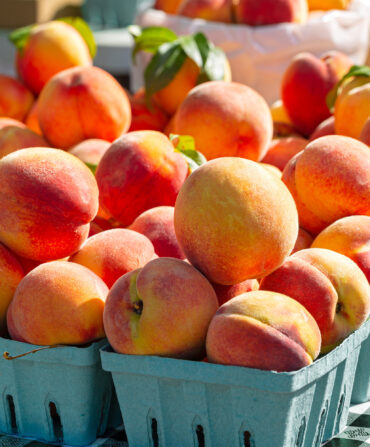My dad, a born and raised Texan, introduced our family to pickled okra. You’d think he ate it as a child growing up in Wichita Falls, but it wasn’t until he started taking business trips to Natchez, Mississippi, in the early 1960s that he discovered the briny veggies. Over the next couple decades, he would buy jars locally and transport them to where we then lived, in Colorado, back when people could fly with liquids in their carry-on, no problem.
A tradition was born, along with a new generation of pickled okra fans. My sister and I ate the salty snack like addicts (we could easily demolish a jar in a day), and Mom often served it as part of a relish tray alongside olives and carrot sticks when our parents entertained.
I live in Canada with my own family now, and to my dismay, pickled okra is impossible to find. When I try to order it online, most U.S. companies seem to have a “forty-eight contiguous states” shipping policy. I rely on my mom, who lives in Arkansas, to pack a few jars of Old South in her checked luggage when she visits so I can get my fix of the crunchy spears that feel like velvet on the outside, but surprise on the inside with a confetti of seeds.
With okra, it’s all about texture. All pickled foods have that vinegary, slightly sour acidity, but where asparagus is soggy, okra is crispy; where beans are long, skinny, and droopy, okra is short and stout; and where pickles are dense, okra is airy thanks to the pearled seeds inside each petite pod. It’s pickled perfection that’s been at least two hundred years in the making.
Enslaved Africans brought okra to the Americas long ago, sometime between the sixteenth and nineteenth centuries. Okra thrived in the Southern U.S. climate and became a staple in regional dishes such as gumbo and stewed okra. As with many perishable foods before the era of refrigeration, okra would be sliced and dried for the winter, or it was pickled to preserve it, says Liz Williams, a food historian and founder of the Southern Food and Beverage Museum in New Orleans.
At the turn of the twentieth century, a population shift from rural areas to cities—where people were farther from homegrown produce—bolstered the practice of pickling, says Carla Schwan, director of the University of Georgia’s National Center for Home Food Preservation. (The invention of the mason jar in 1858 didn’t hurt.) Naturally, pickled okra also made the jump from family cellars to local grocers. Brands such as Talk O’ Texas and the Arkansas-based Old South started up in the mid-twentieth century and capitalized on the regional popularity of this niche product.
But the delicacy is slowly creeping up the Eastern seaboard, with brands like the New York–based Rick’s Picks Smokra (pickled okra in a brine that includes smoked paprika) gaining popularity. As folks in the South move north, they take the demand for pickled okra with them, says Old South president Philip Bryant. I’m proof of this type of food migration.
People tell me I should just go old-school and pickle my own okra (you can buy the pods fresh in Canada). But I’m holding out hope that—like fried chicken and cornbread—the jars of my favorite childhood indulgence will eventually find their way to Canadian grocery stores. In the meantime, there’s always my mom’s checked baggage.








